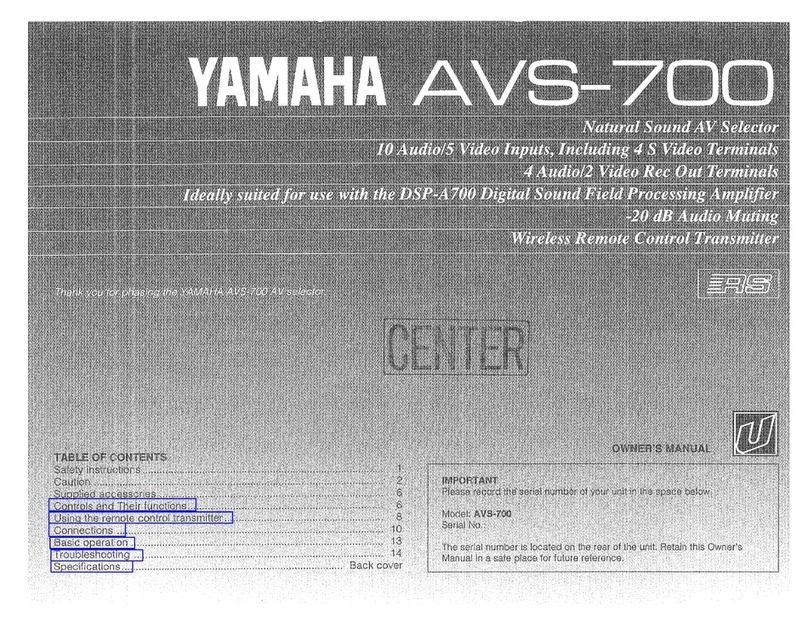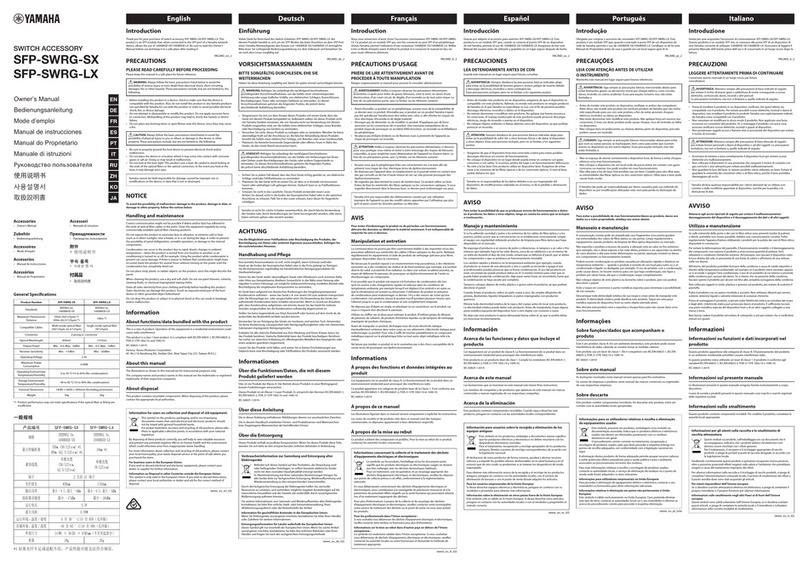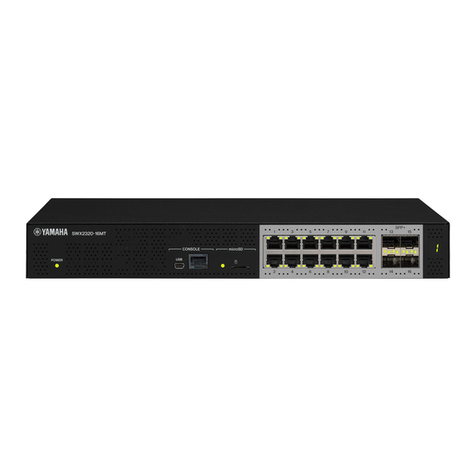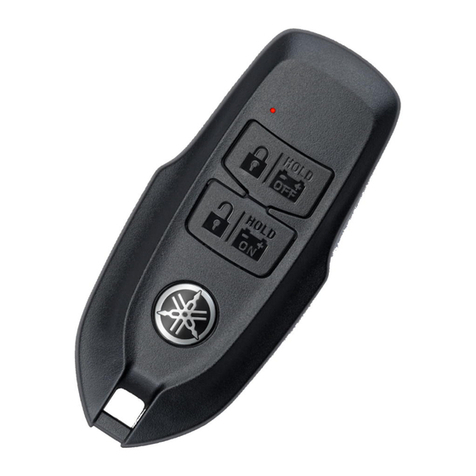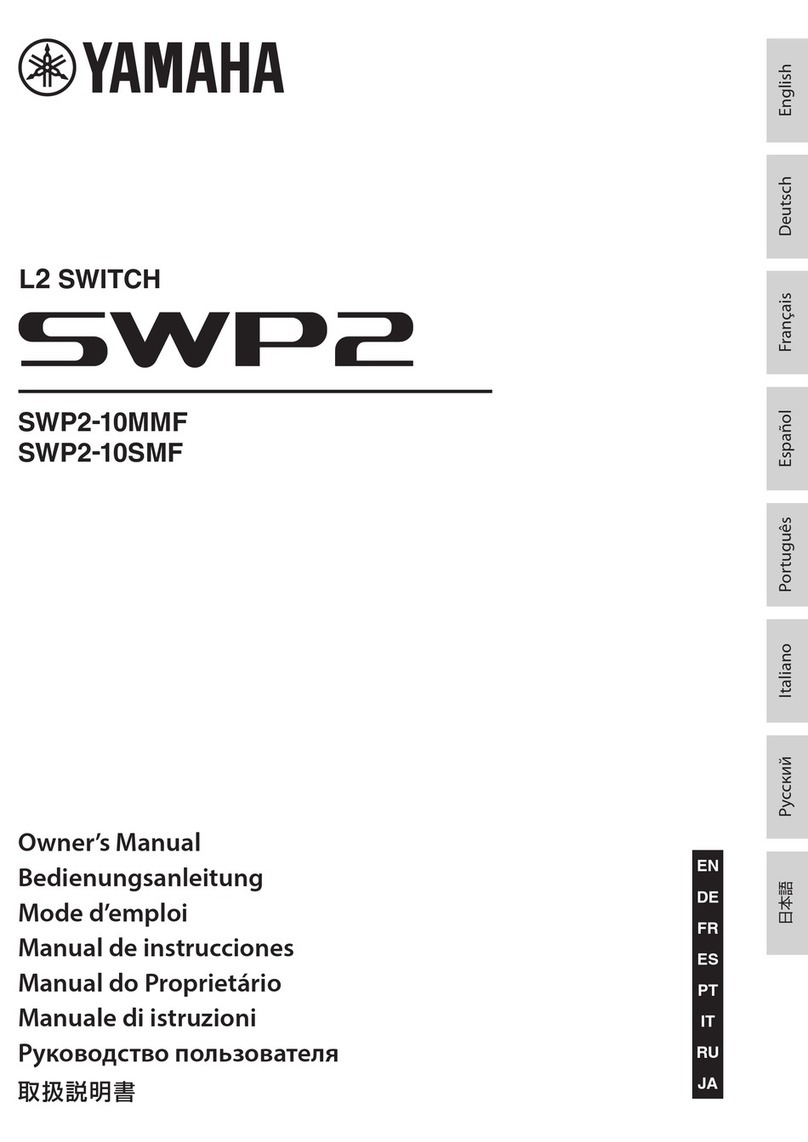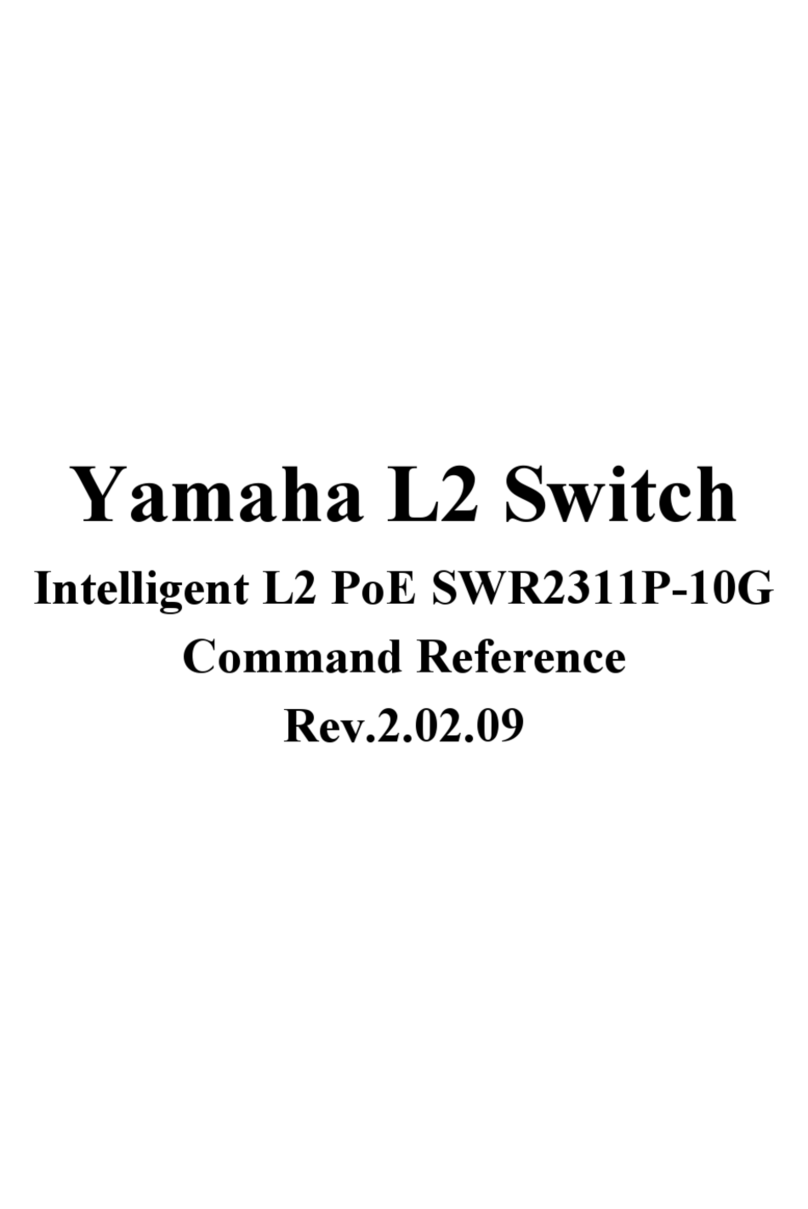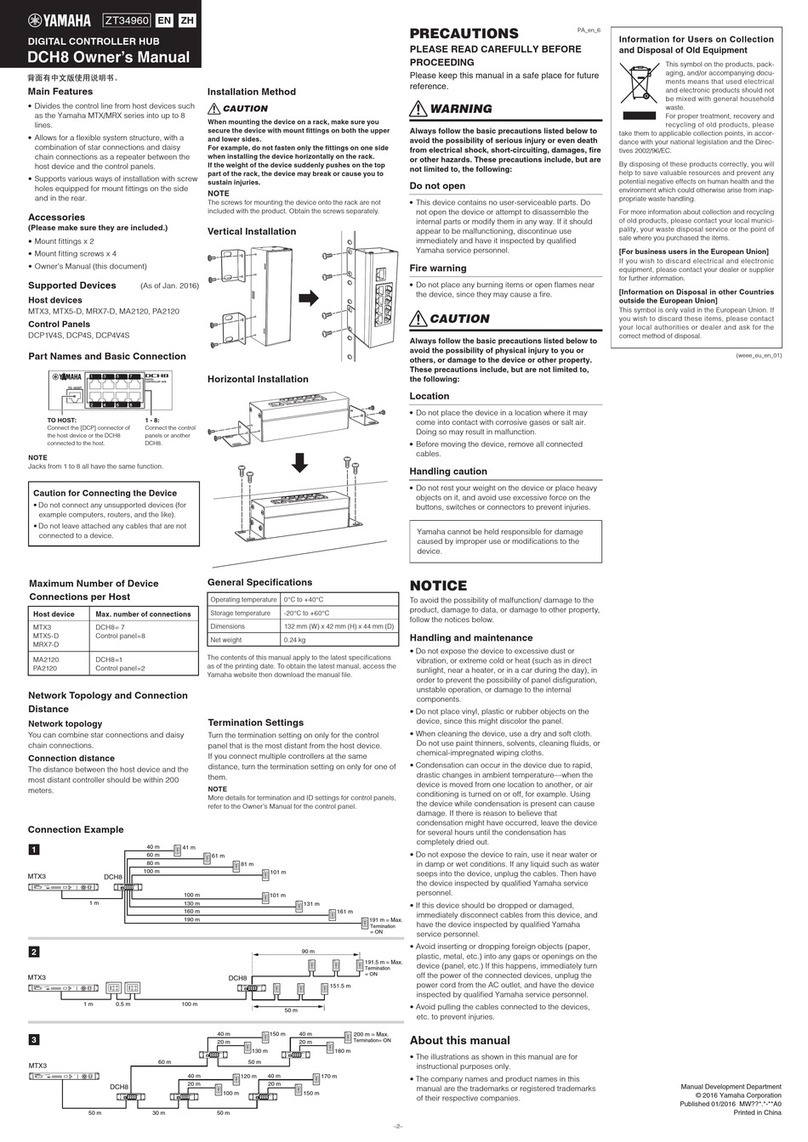
SWP1 Owner’s Manual 7
SOFTWARE LICENCE
AGREEMENT
This agreement is an agreement between you, the customer,
and Yamaha Corporation (hereafter referred to as “Yamaha”)
defining the conditions under which Yamaha provides firmware
for this Yamaha network product (hereafter referred to as the
Product) and related programs, printed material, and electronic
files (hereafter referred to as the Software).
The Software may be used only for the purpose of operating it on
the Product or on a personal computer or similar device. This
agreement applies to the Software provided by Yamaha to the
customer and to copies of the Software created by the customer
in compliance with section 1 subsection (1) of this agreement.
1. Permission to use
(1) The customer may install and use the Software on a Product
or a personal computer or similar device owned by the
customer.
(2) With the exceptions that are explicitly defined by this
agreement, the customer shall not permit the reuse of, sell,
distribute, rent, lease, lend, or transfer the Software, nor
upload it to any website or server where it could be
accessed by specified or unspecified numbers of people,
nor duplicate, translate, adapt it, or rewrite it into any other
program language. The customer shall not correct, revise,
reverse-assemble, reverse-compile, or perform any reverse
engineering of the Software, and may not cause any third
party to perform such actions.
(3) The customer shall not modify, erase, or delete the Yamaha
copyright indications that are included in the Software.
(4) With the exceptions that are explicitly defined by this
agreement, Yamaha does not grant or permit the customer
any of Yamaha's intellectual property rights.
2. Property rights
The Software is protected by copyright law and by other laws,
and is the property of Yamaha. The customer hereby agrees that
no property rights or intellectual property rights related to the
Software are granted by Yamaha to the customer by this
agreement nor any other means.
3. Export restrictions
The customer shall abide by all applicable export regulations
and rules of the relevant countries, and shall not export or re-
export the Software, neither in part nor in whole, in violation of
any applicable rules and regulations.
4. Support and updates
Yamaha, its subsidiaries, their sales representatives and
dealers, and any other party handling or distributing the
Software do not accept any responsibility for maintaining the
Software nor for supporting the customer's use of the Software.
Nor do the aforementioned parties have any responsibility to
update the Software, to fix bugs, or to provide support.
5. Limitation of responsibility
(1) The software is licensed for use “in its current state (as-is).”
Yamaha, its subsidiaries, their sales representatives and
dealers, and any other party handling or distributing the
Software make no warranty, neither explicit nor implicit,
regarding the merchantability or suitability of the Software for
any particular purpose.
(2) Yamaha, its subsidiaries, their sales representatives and
dealers, and any other party handling or distributing the
Software shall bear no responsibility for any damages
(including but not limited to lost profit and any other
consequential or incidental damages) that may arise from
the use of or inability to use the Software. This shall be the
case even if Yamaha, its subsidiaries, their sales
representatives and dealers, or any other party handling or
distributing the Software had been informed of the possibility
of such damages.
(3) Yamaha, its subsidiaries, their sales representatives and
dealers, and any other party handling or distributing the
Software shall bear no responsibility for any dispute between
the customer and a third party that may arise from or related
to the use of the Software.
6. Term of validity
(1) This agreement shall continue in force until it is terminated
by the following sub-sections (2) or (3).
(2) The customer may terminate this agreement by deleting all
instances of the Software that are installed on the Product or
on a personal computer or similar device.
(3) This agreement shall immediately terminate if the customer
violates any of the terms of this agreement.
(4) Upon the termination of this agreement due to sub-section
(3) above, the customer shall immediately delete all
instances of the Software that are installed on the Product or
on a personal computer or similar device.
(5) Regardless of any clauses of this agreement, the provisions
of sections 2 through 6 of this agreement shall continue in
force even after the termination of this agreement.
7. Separability
Even if any clause of this agreement should become invalid, the
remainder of the agreement shall remain in force.
8. U.S. GOVERNMENT RESTRICTED RIGHTS
NOTICE:
The Software is a “commercial item,” as that term is defined at
48 C.F.R. 2.101 (Oct 1995), consisting of “commercial computer
software” and “commercial computer software documentation,”
as such terms are used in 48 C.F.R. 12.212 (Sept 1995).
Consistent with 48 C.F.R. 12.212 and 48 C.F.R. 227.7202-1
through 227.72024 (June 1995), all U.S. Government End Users
shall acquire the Software with only those rights set forth herein.
9. General articles
The customer agrees that this agreement is the complete and
only declaration of agreement between the customer and
Yamaha regarding all matters prescribed by this agreement, and
that it takes precedence over all proposals, prior agreements, or
any other communication between the customer and Yamaha,
whether oral or written. No change to this agreement shall have
any force unless it is signed by a representative who is duly
authorized by Yamaha.
10. Jurisdiction
This agreement shall be under the jurisdiction of the laws of
Japan, and shall be interpreted according to those laws.
